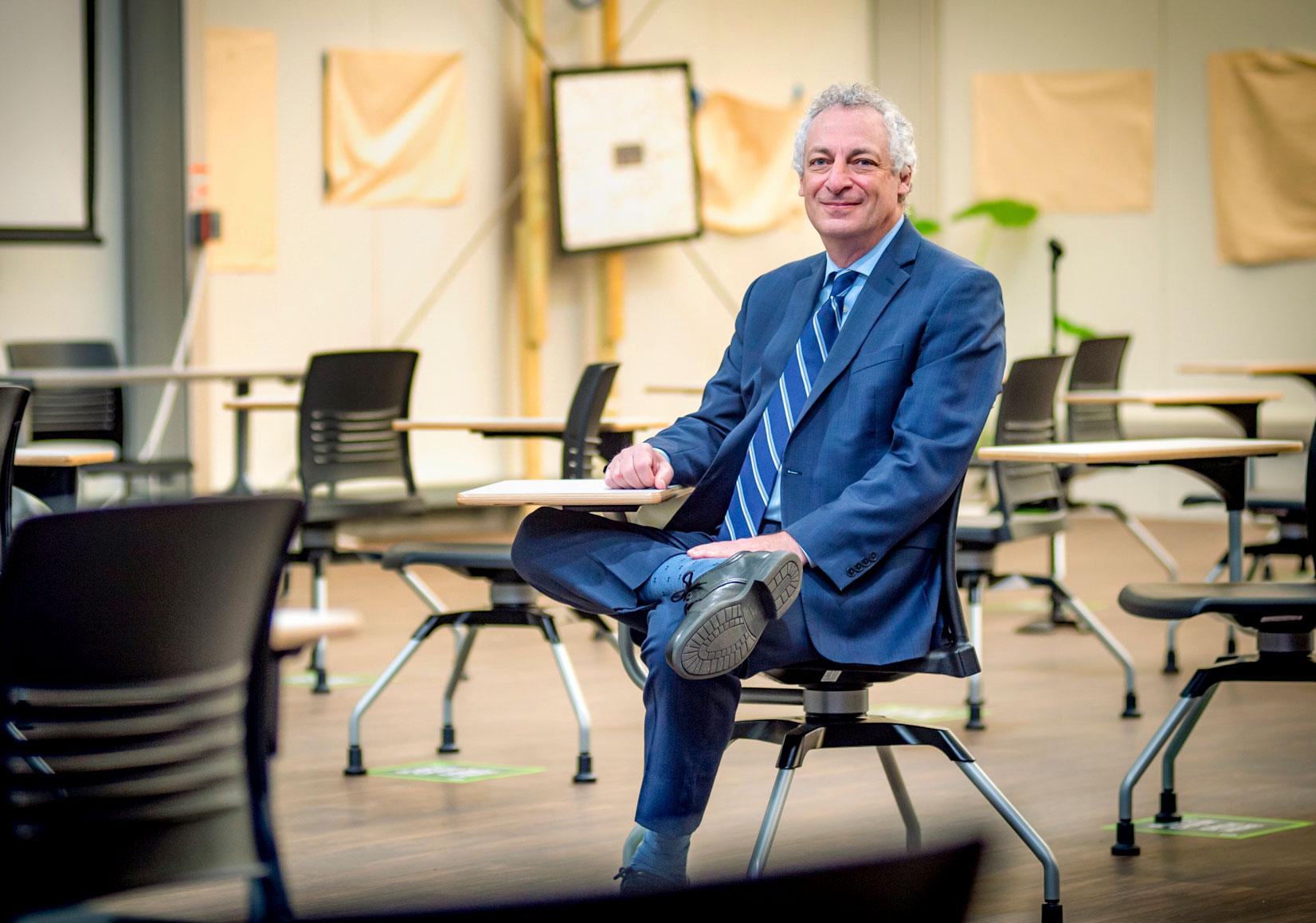
As Tulane prepares to begin the spring 2021 semester, Robin Forman, senior vice president for academic affairs and provost, talks about improvements to the temporary classrooms installed last fall to increase the university’s capacity to hold on-ground classes in a safe, socially distanced manner during the COVID-19 crisis.
What changes can faculty and students expect in the 13 temporary classrooms for the spring?
The fall was a time of extraordinary experimentation and innovation, and that includes the introduction of the temporary classrooms. Initially, they posed some challenges. We introduced several improvements through the fall, and then we were able to use the winter break to undertake a major upgrade. The main challenges were that the air conditioning was loud and there was an echo. So we put sound insulators around the air conditioning units, and that significantly reduced the noise. Then we installed echo-reducing curtains, we angled the speakers to reduce the echo, and we installed stronger amplifiers. The improvement has been dramatic.
What improvements were made to other nontraditional classrooms called into service during the crisis?
In four nontraditional classrooms — two in The Commons and two in the Lavin-Bernick Center for University Life — we took advantage of the time over the winter break to take out all of the older audiovisual equipment. In the fall we had simply added the new equipment to what was already in these rooms, and the result was not optimal. Over the break we took it all out and replaced the original tech with new equipment that is both higher quality and more compatible with the newer additions. This is an investment that will also have long-term benefits, since these are popular multipurpose spaces, frequently hosting events, lectures and classes, and the improved audiovisual equipment will significantly improve those experiences.
What significant new communications equipment will be distributed to faculty members for the spring semester?
We found that a certain type of microphone worked best — a universal microphone, a hands-free headset that places the microphone very close to the speaker’s mouth. This headset allows faculty to be heard extremely clearly, even in the temporary classrooms. We purchased these headsets for all the faculty who will be teaching in the spring — they are being distributed this week — and we have installed an adapter in every classroom so that those microphones can be input into the audiovisual equipment.
How about amplifying student voices?
We are continuing to explore innovations that will improve the classroom experience. For example, we are testing software that will allow the voices of students in the classroom to come clearly through the audio equipment so that conversations can take place more easily even in large classrooms with all students wearing masks and socially distancing. It is already the case that students in the classroom can use the Zoom [video conferencing technology] app on their phone, so that they can speak into their phone and their voice will come out of the speakers. We’re working with an external vendor to explore an app that would allow the students to talk directly into the speaker system without first going through Zoom, which should result in clearer audio, without the minor delay the students often experience using Zoom in the classroom. This software has already been installed in several classrooms and gives our faculty and students one more tool they can use to improve the experience.
On a different note, what is your sense of the mood of students as we move into the spring semester?
At the end of every semester, I receive letters from students and parents, thanking us for our work. It was particularly uplifting to get those notes this semester, letters from folks who are the first to say that this was not the college experience they were hoping for. In some cases, these students spent time in quarantine or isolation. Nonetheless, they were writing to express their gratitude for the opportunity we gave them to come to campus and engage with our faculty and each other, and for our commitment to do everything we could to keep them safe. And they talked about how much they grew and how much they learned, and how much they appreciate the work we did to make it all possible.
I think that’s the mood: there is certainly an ongoing sense of anxiety about the virus, now mixed with optimism about the new vaccines, but there is also a deep sense of pride in what we accomplished in the fall, and a continued sense of ambition for what we can accomplish in the spring, even in these most trying of circumstances.
Interview by Mary Ann Travis

